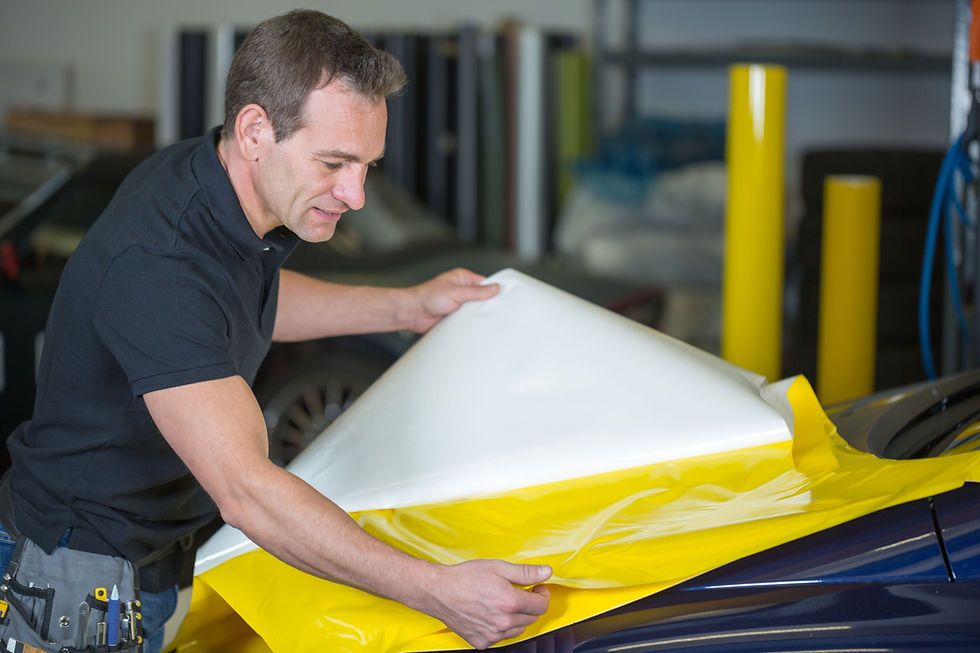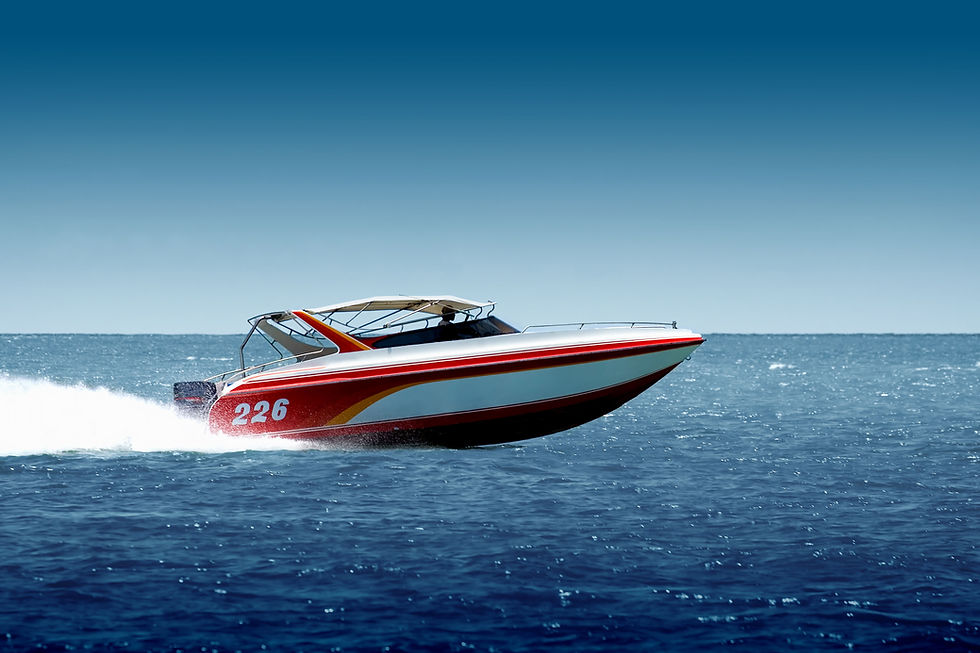How Long Do Auto Wraps Last? Factors That Affect Durability
- No Author
- Nov 13
- 5 min read
If you're investing in eye-catching vehicle branding, you're likely asking, "How long do auto wraps really last?" At Wraphx we specialize in premium fleet and vehicle wrap solutions, and one of the most common questions we hear from customers is about lifespan: when will the wrap begin to show wear? Understanding the durability of auto wraps is more than just a material question.
It's about installation quality, environmental exposure, maintenance habits, and physical use. With vehicle wraps serving not only aesthetic purposes but also brand visibility and advertising value, knowing what affects longevity lets you plan smarter. For example, according to ECTTS, over 95% of Americans are exposed to advertising that targets drivers and passengers on the road. That statistic underscores why a high-quality wrap matters because your vehicle is an advertising asset in motion.
Installation Quality and Material Choice
One of the first and most critical factors that influence how long auto wraps last is the quality of installation and the materials used. Not all auto wraps are created equal — premium films from industry-leading manufacturers paired with professional workmanship will outlast bargain-basement jobs. At Wraphx, for instance, we emphasize using certified materials and G7 color-standard production to ensure consistency and durability. This attention to precision not only guarantees vibrant, accurate colors but also ensures that every layer of the wrap performs as intended under real-world conditions.
When the vinyl film is applied properly — edges trimmed and tucked, surfaces cleaned and prepped, and heat used correctly around curves and seams — the wrap will adhere well and resist lifting or peeling. Proper curing and temperature control during installation also make a significant difference in longevity. Conversely, poor prep or cheap film can lead to early failure: fading, cracking, bubbling, or peeling can begin in months rather than years. For businesses counting on vehicle exposure as part of their marketing strategy, this is a crucial distinction. Ensuring installation by certified professionals is the first big step toward maximizing how long your auto wraps will last and how well they represent your brand on the road.
Environmental Exposure and Weather Conditions
Another major influence on durability is the environment your vehicle and its wrap face on a daily basis. Sunlight, heat, cold, rain, snow, salt, and other atmospheric factors all play a role. If a vehicle is parked outdoors in direct sunlight for long hours, the wrap film is exposed to higher UV stress, leading to faster fading or brittleness. Similarly, vehicles operating in harsh climates — extreme heat, desert conditions, or regions with heavy salt use on roads — will put extra strain on the wrap material and adhesive.
On the flip side, a vehicle stored indoors, garaged, or covered when not in use will offer its wrap a much gentler life. Even parking in shaded areas or using a car cover can make a noticeable difference over time. The bottom line: one vehicle driving coast-to-coast and spending long hours in sun and heat may see the wrap degrade earlier, while another kept in a mild climate and under cover will likely enjoy a longer-lasting finish. For business fleets or single vehicles, factoring in the operating environment is essential when estimating the lifespan of auto wraps — and preventive measures like ceramic coatings or UV protectants can further extend that life.
Usage Intensity and Vehicle Movement
How often your vehicle is used, how far it drives, and the nature of its routes also affect how long an auto wrap lasts. A vehicle that sits idle most of the time will naturally place less wear on its wrap than one traveling daily, across long distances, through varying road conditions. Fleet vehicles, delivery vans, and service trucks often take a pounding from hours of use, stop-and-go traffic, frequent starts and stops, and road debris. Even simple factors like frequent car-door use or highway travel speed can contribute to micro-abrasions and edge wear.
If the vehicle frequently drives through industrial zones, near construction, or onto off-road surfaces, the wrap film may see more impacts, abrasions, or exposure to grit. Each of these stressors shortens the effective lifespan of the wrap. In contrast, a showroom-type or lightly used branded vehicle may see significantly extended longevity, maintaining a vibrant finish for years longer. Therefore, when estimating "how long will my wrap last," consider not just calendar years but also the intensity and conditions of use — because motion, friction, and exposure matter just as much as time.
Maintenance Practices and Care Routine
The way you care for your vehicle and maintain the wrap significantly affects how long auto wraps last. Neglecting maintenance — frequent car washes with high-pressure jets near edges or harsh chemicals or ignoring small damage or lifting edges — can accelerate wrap degradation. On the other hand, implementing a proactive care routine will extend its life. Rinsing off salt or chemicals promptly, choosing gentle hand washes with wrap-safe products, and avoiding automatic brushes or abrasive pads all contribute to longer performance.
Additionally, if the wrap is damaged — such as when a lift or peel begins — prompt repair helps prevent the problem from escalating into full-panel peeling or material failure. Even simple steps like using microfiber towels, avoiding waxing matte finishes, and scheduling regular inspections keep wraps looking fresh. Wraphx supports ongoing maintenance programs for brands and fleets, providing the resources and touch-ups needed to preserve your wrap's brilliance. The better you treat the wrap, the longer the lifespan — and the stronger your rolling advertisement remains.
Design Complexity and Wrap Coverage Extent
Finally, the design elements and the degree of coverage affect how long the wrap will last. A full-vehicle wrap that covers doors, bumpers, side panels, roof, and rear may have more seams, more complex curves, and more opportunity for edge stress or lifting than a partial wrap such as a standard side panel graphic or hood only. Highly customized designs, metallic finishes, textured films, and specialty effects — while visually striking — may require more care or have shorter warranty expectations depending on the material used.
Moreover, coverage across less accessible panels or around high-wear zones, like the bumper corners, front lip, and wheel arches, will subject the wrap to more stress from road debris, cleaning abrasion, and traffic contact. It's also worth considering how frequently these areas come into contact with dirt and moisture. When discussing with Wraphx, ask about how the design and intended coverage affect durability and whether your chosen film and installation method support long-term performance. The simpler and more strategic the design in high-wear areas, the fewer risk points for early failure — and the better the balance between bold design and lasting durability.
When you invest in vehicle graphics or full-fleet branding with auto wraps, understanding the lifespan isn't just about the number of years. It's about how well each factor is managed: installation quality, environment, usage, maintenance, and design complexity. By choosing premium materials and certified installation, caring for the wrap properly, and matching coverage to the vehicle's use, you give your wrap the best chance to provide standout branding for many years.
If you're ready to elevate your brand visibility and maximize the longevity of your wrap investment, reach out to Wraphx today for a free consultation and discover how your vehicle can not only look great but also perform as a durable marketing asset.




Comments